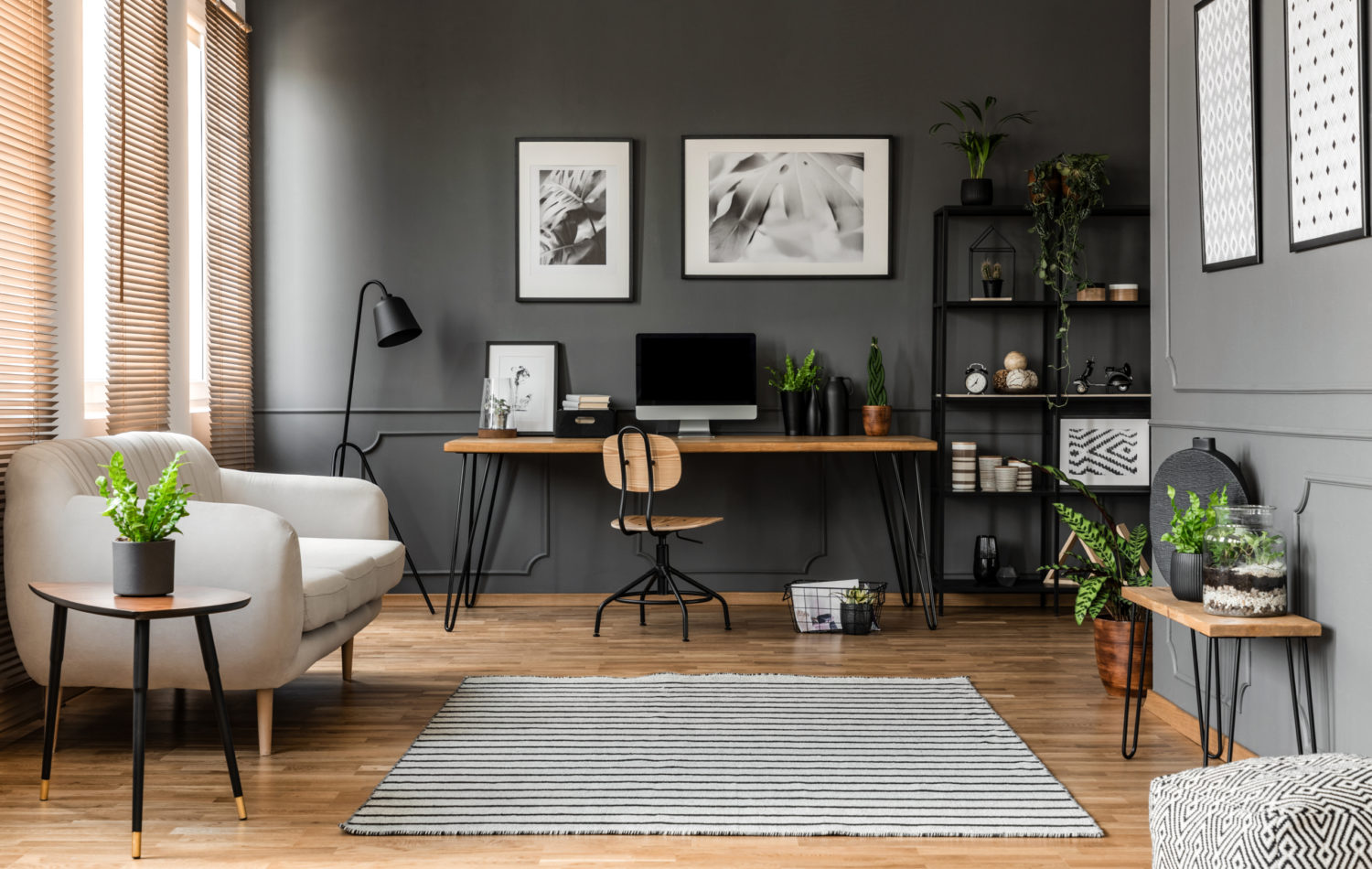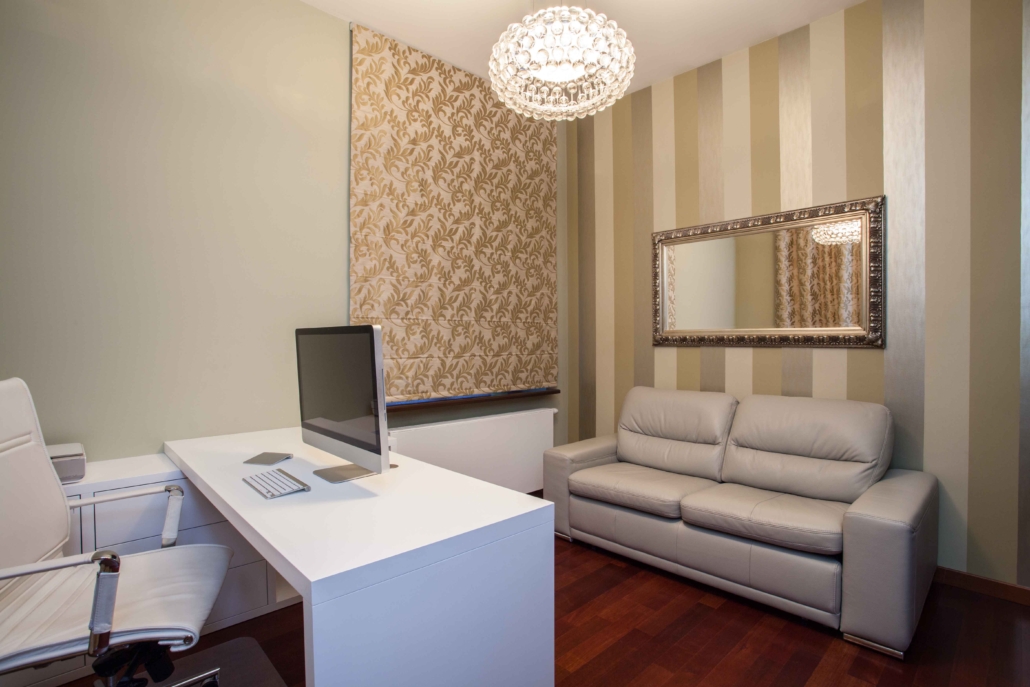Working from home has evolved from a temporary solution into a lasting lifestyle. But while laptops and Wi-Fi make it possible to work anywhere, true productivity requires more than just a desk and chair. A well-designed home office blends comfort, organization, and design to create a space that supports focus, reduces distractions, and reflects your personality.
Whether you’re remodeling a spare room, finishing a basement, or planning a small home office addition, this guide walks you through the ten essentials every productive workspace needs. By the end, you’ll understand how to build an ergonomic, stylish, and functional home office—one that inspires you to do your best work and adds long-term value to your home.
Natural light plays a major role in every successful home office remodel. Exposure to daylight improves focus, regulates mood, and helps you stay alert throughout the day. When planning your workspace layout, position your desk near a window to capture as much natural light as possible while maintaining privacy and minimal glare. If the layout or orientation of your home doesn’t allow for direct sunlight, consider adding skylights or glass-paneled doors that allow light to filter deeper into the space. For basement office remodels, egress windows or light wells make even lower levels feel airy and open. Homeowners planning larger transformations such as a home addition or full remodel can work with a design-build team to reconfigure wall openings or add windows that enhance natural light flow throughout the room.
When daylight fades, a well-planned lighting design keeps your office both comfortable and functional. The best home office remodel ideas feature layered lighting—a combination of ambient, task, and accent illumination that adapts to different times of day. Ambient lighting, such as recessed ceiling fixtures or wall sconces, provides overall brightness. Task lighting, like an adjustable desk lamp, focuses on specific work areas. Accent lighting highlights artwork, shelving, or textured walls. Warm-tone LED bulbs (2700–3000K) reduce glare and eye strain, while statement pendants or linear fixtures add character to the design. This balance of lighting layers supports long working hours without fatigue and creates an inviting professional atmosphere.
A thoughtful ergonomic home office design begins with the right desk setup. Adjustable or sit-stand desks allow you to alternate between sitting and standing, preventing strain and improving focus. The work surface should be wide enough for dual monitors, note-taking, and décor, yet organized to maintain visual clarity. In smaller spaces, floating desks or corner configurations maximize usability without crowding the room. During a whole-home renovation or new addition, custom millwork can integrate the desk into the architectural design, giving you a seamless, built-in workspace that blends style and performance.
Just as important as the desk is the chair that supports you through every workday. Investing in an ergonomic, adjustable chair helps maintain posture, prevents back pain, and promotes long-term comfort. Look for lumbar support, breathable materials, and adjustable height to fit your workstation perfectly. Beyond ergonomics, your chair should complement your interior aesthetic. A sleek modern chair may pair beautifully with minimalist spaces, while a tufted or leather executive chair enhances more traditional décor. The goal is to combine function with form—creating a workstation that feels as polished as it performs.
Organization is the backbone of a productive home office. Clutter not only distracts but also reduces efficiency. Smart storage solutions such as built-in shelving, floating cabinets, or tall towers can keep essential tools close by without overwhelming the room. For smaller home office renovations, vertical storage makes the most of every inch. Options include pull-out filing drawers, open shelving for books and décor, and hidden cabinets for printers or routers. The design team at Hammer Design Build Remodel specializes in custom cabinetry that integrates seamlessly with your home’s architecture, ensuring that storage feels intentional rather than improvised. A tidy, organized space naturally enhances creativity and workflow.
Soundproofing and privacy are essential for focus—especially if your home office is near high-traffic areas. Using solid-core doors, acoustic panels, thick rugs, and layered window treatments can significantly dampen noise. During a remodel, contractors can also add insulation within walls or ceilings to improve acoustic comfort. For flexible layouts, sliding barn doors or glass partitions create separation without isolating you completely. These techniques are particularly valuable for professionals who take frequent video calls, attend virtual meetings, or produce creative work from home.
A personalized design transforms your office from a functional corner into a space that inspires you daily. Incorporate décor elements that reflect your style—framed artwork, travel photography, or a statement light fixture. Use color psychology strategically: soft blues and greens foster calm and concentration, while warmer shades like terracotta or mustard encourage creativity and motivation. In any modern home renovation, these personal touches make the office feel cohesive with the rest of your home while supporting a mood conducive to productivity.
Bringing elements of nature indoors through biophilic design also contributes to well-being. Adding greenery—such as snake plants, pothos, or succulents—improves air quality and provides a visual break from screen time. Incorporating natural textures like wood, stone, or woven fibers can further ground the space. For larger remodels or home office additions, adding glass doors that open to a patio or garden connects the workspace to the outdoors, reinforcing a sense of balance and vitality. Homeowners across Washington, DC, and Bethesda increasingly request this connection between architecture and nature in their whole-home remodeling projects.
Finally, smart technology integration ties the entire design together. Hidden cable management systems, USB outlets, and under-desk power strips keep cords out of sight. Smart lighting allows you to adjust brightness or color temperature based on the time of day. Motorized shades, built-in speakers, and climate controls further enhance comfort and efficiency. When you collaborate with an experienced design-build firm, these upgrades can be seamlessly integrated during construction rather than added later—ensuring your home office is not only beautiful but also technologically equipped for modern work.
A Defined Entry and Separation from Home Life
Work-life boundaries are essential in remote environments. If your office is part of a home addition or converted basement, include a defined entryway or partition to create mental separation between work and home.
Sliding glass doors, pocket doors, or even strategically placed bookcases can achieve this separation while maintaining openness. This helps you “step into” work mode and “step out” at the end of the day—key for long-term balance and focus.
Common Mistakes to Avoid
-
Neglecting lighting and ventilation – Poor airflow and inadequate light reduce energy and productivity.
-
Over-decorating small offices – Cluttered visuals create stress. Keep design intentional and functional.
-
Ignoring acoustics – Hard surfaces amplify noise. Add rugs, panels, or drapes for balance.
-
Choosing style over ergonomics – A trendy setup isn’t helpful if it causes strain or discomfort.
-
Skipping electrical planning – Plan outlets, USB ports, and cable management early in your remodel.
Frequently Asked Questions
Do I need a large space for a functional home office?
No. Even small spaces can function effectively with built-in desks, vertical storage, and layered lighting.
What’s the best location for a home office?
Choose a quiet area with natural light—commonly a spare bedroom, finished attic, or converted basement.
How do I make my office feel separate from the rest of the house?
Add partitions, sliding doors, or layout zoning to define the workspace while maintaining harmony with your home’s design.
Can a home office remodel increase home value?
Yes. Dedicated office spaces are highly desirable for modern buyers, especially in markets like Washington, DC and Bethesda.
What’s the best way to start planning my remodel?
Consult with a design-build team that offers architectural design and project management under one roof. They’ll help you plan layouts, lighting, and custom cabinetry for your specific needs.
A thoughtfully designed home office remodel goes beyond aesthetics—it enhances well-being, boosts focus, and supports a balanced lifestyle. By prioritizing light, comfort, and organization, you’ll create a workspace that inspires productivity day after day.
If you’re ready to reimagine your home with a dedicated office that fits your workflow, connect with Hammer Design Build Remodel at 202-559-3990. Their award-winning team specializes in design-build remodeling throughout Washington, DC, Bethesda, and Silver Spring—creating spaces that blend function, beauty, and craftsmanship.


